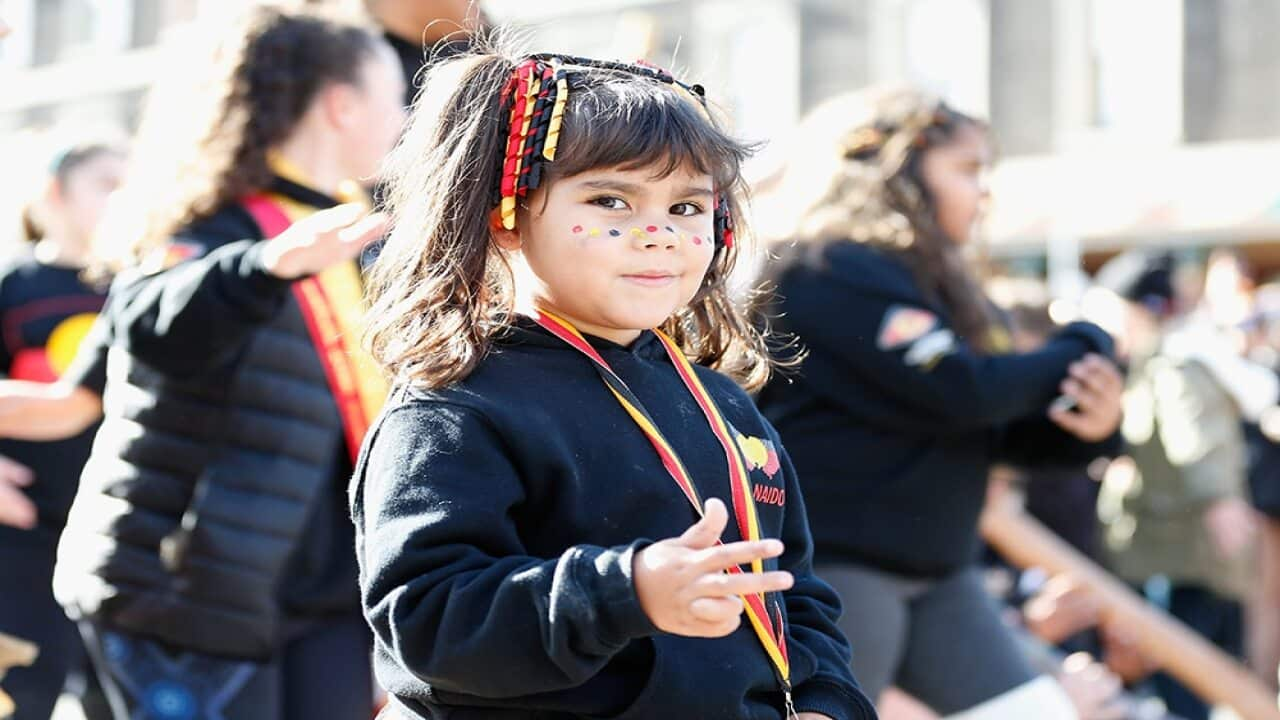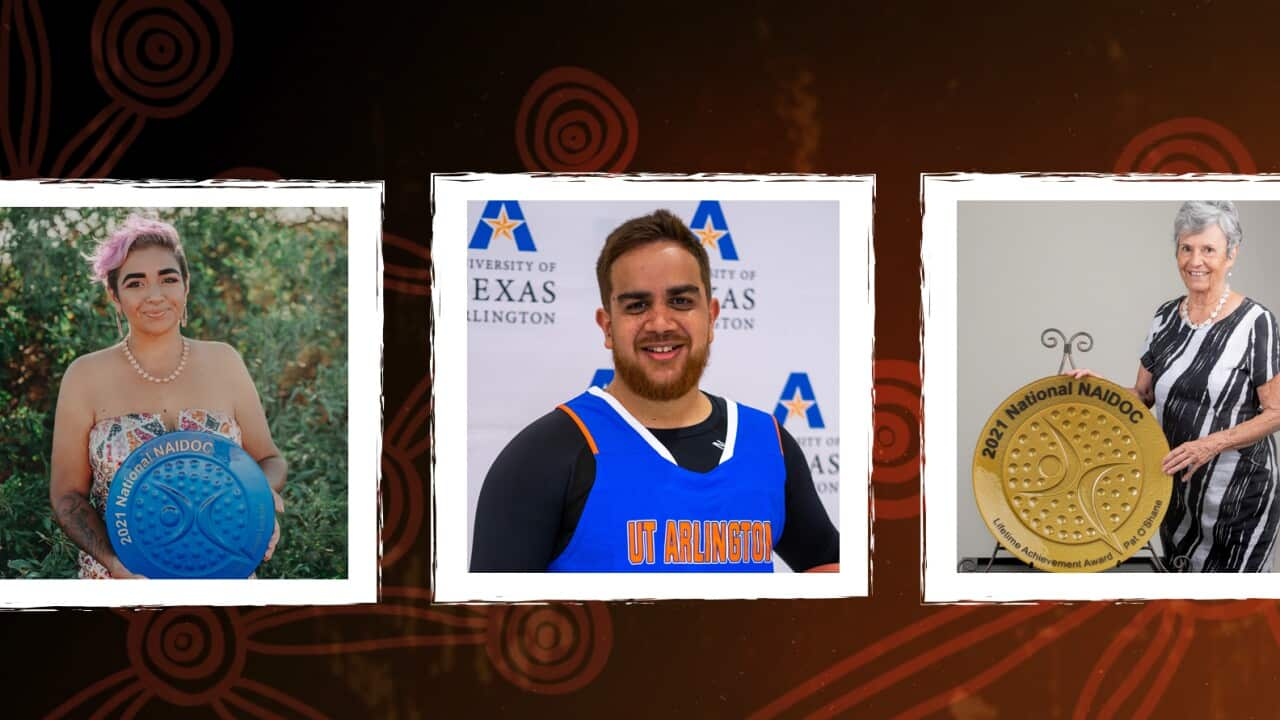NAIDOC stands for the National Aboriginal and Islander Day Observance Committee. It is a significant week in the Australian calendar, and an especially important one for many Indigenous communities around the country.
It is a week to celebrate Indigenous culture and heritage, commemorate our history, unify our communities, and share that with the rest of the nation.
When does it take place?
NAIDOC Week happens each year between the first and second Sundays in July.
There are special NAIDOC events held all around the country and often involve music performances, art showcases, cultural workshops, talks, and activities for children.
Like other major cultural festivities, the event is amplified in the national conversation with , and publicity and city streets are often donned with flags and iconography.

The 2022 NAIDOC theme. Source: National NAIDOC Committee
NAIDOC themes
Each year a different theme is selected by the NAIDOC Committee which provides the focus for NAIDOC Week.
These themes have previously ranged from political, social and cultural issues, including Treaty, Sacred Sites, Cultural revival is Survival, the Tent Embassy, Bringing Them Home, the Yirrkala Bark Petitions, Families, White Australia has a Black history, Respect, and Self-determination among others.
The posters for each year’s theme are selected through a national competition. 1972 saw the very first poster was created for what was then known as 'Aborigines Day'. The national competition began in the 1990s.
This year's theme is: "Get Up! Stand Up! Show Up!", recognising the historic resistance of First Peoples and encouraging communities to continue the fight for justice and rights for Aboriginal and Torres Strait Islander people.
The 2022 poster competition winner is proud Gudanji/Wakaja woman, .

National NAIDOC Week 2022 Poster Competion Winning Artwork - Stronger by Ryhia Dank. Source: Supplied
NAIDOC Ball and the NAIDOC Awards
Although it is a national event, NAIDOC Week has a host city each year where the official NAIDOC Ball is held and the NAIDOC Awards are presented. This year the host city is Naarm (Melbourne). There are ten categories for the NAIDOC awards, awarded to those who have empowered Aboriginal and Torres Strait Islander communities, promoted First Nations issues in the wider community or show excellence in their field.
There are ten categories for the NAIDOC awards, awarded to those who have empowered Aboriginal and Torres Strait Islander communities, promoted First Nations issues in the wider community or show excellence in their field.

Torres Strait woman Elma Gada Kris accepting the Artist of the Year Award at the NAIDOC Awards 2019 Source: National NAIDOC Committee
- Lifetime Achievement Award
- Person of the Year
- Female Elder of the Year
- Male Elder of the Year
- Caring for Country Award
- Youth of the Year
- Artist of the Year
- Scholar of the Year
- Apprentice of the Year
Over time, the awards have varied; some have been removed, added and changed. For example, 'Aboriginal of the Year' is now known as Person of the Year, there is no longer a national Miss NAIDOC, nor are there Torres Strait-specific awards.
Some notable past winners include Ernie Dingo (Person of the Year, 1994), Pat & Mick Dodson (joint Person of the Year, 1998), Deborah Mailman (Person of the Year, 2002), Adam Goodes (Sportsperson of the Year. 2004), Leah Purcell (Artist of the Year, 2007), Dr G. Yunupingu (Artist of the Year, 2016) — the list goes on!
States and territories, and city councils, will also host their own NAIDOC Awards, awarding members of their community.
The history of NAIDOC week
The origin of NAIDOC Week is often regarded as beginning in the 1950s, but the influence of the 1938 Day of Mourning is acknowledged by many as creating the catalyst, and widespread support, for such an annual event.
Between 1940 and 1954 the Day of Mourning was held on the Sunday prior to Australia Day and commonly became known as 'Aborigines Day'.
In 1955 however, it was shifted to the first Sunday in July to disparage the idea of protest and instead promote it as a day of celebration; that the 26th of January is still regarded by many as the Day of Mourning, as well as Invasion Day or Survival Day, gives us some indication that not everyone agreed with this shift.
The following year, in 1956, the second Sunday in July become a day of remembrance for Aboriginal peoples and this provided the key dates for NAIDOC Week (then NADOC) that remain today.
NADOC, the National Aborigines Day Observance Committee, was made up of Aboriginal and non-Aboriginal members until 1974, the first year that the committee was entirely Aboriginal run.
This was also the first year that it was decided that the event should last for a full week, and it was commonly referred to as National Aborigines Week from this point forward until 1989, when the term NAIDOC Week was formally introduced.
Today, the word 'Aborigine' is deeply rooted in colonial language and is now generally considered inappropriate and out of touch. Today, we just say 'Aboriginal' and refer to people by their Nation.
Despite its decades-old history, NAIDOC Week is still a point of contention for some, with stories about certain local councils or other government agencies refusing to fly the Aboriginal and/or Torres Strait Islander flags or perform Acknowledgements of Country being a common news story in recent years.
There have been many calls over the past few decades for NAIDOC Week to be recognised as a national holiday but this is still yet to occur.
This year's NAIDOC theme is Get Up! Stand Up! Show Up! Recognising the fight and resilience Aboriginal and Torres Strait Islander people continue in pursuit of First Nations' rights.
NAIDOC Week is a national celebration of Aboriginal and Torres Strait Islander peoples, history and culture, and runs from 3-10 July. SBS & NITV are the official national NAIDOC media partner.
Join the conversation #NAIDOC2022













